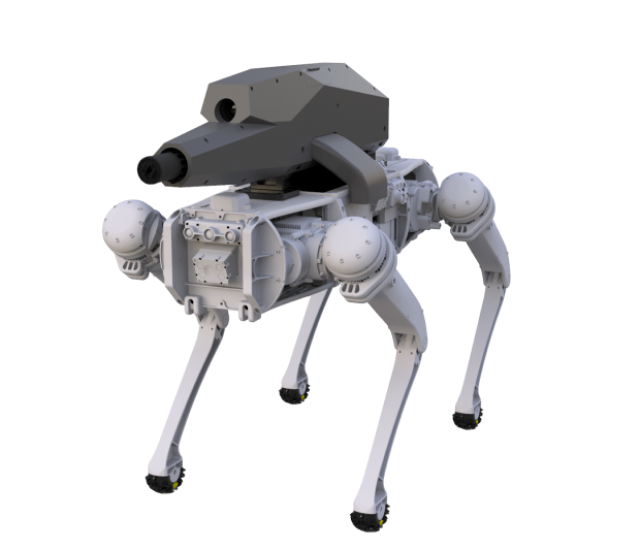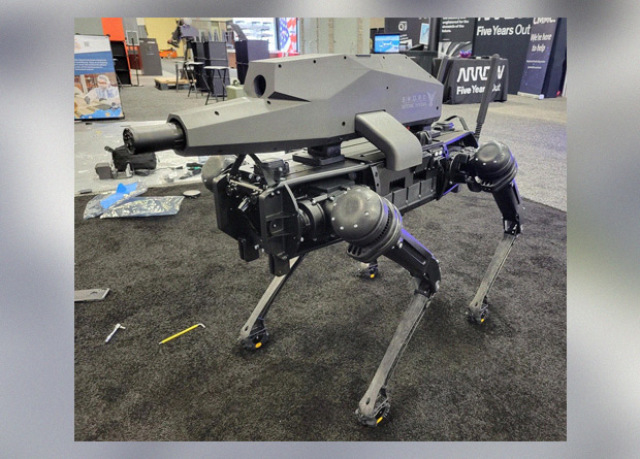The American companies Ghost Robotics and S.W.O.R.D. Defense showed a combat robot based on the four-legged robot Vision-60. It is equipped with a rifle with a range of 1.2 kilometers and a thermal imager.
Four-legged robots received quite a big incentive to develop when the US military became interested in them in the 2000s. In particular, Boston Dynamics, with the support of DARPA, developed the BigDog robot, which it proposed to use for transporting goods in mountains and other terrain with difficult terrain. But in the mid-2010s, the military refused from this project, therefore, the developers of four-legged robots, including Boston Dynamics itself, focused on civilian developments.
Ghost Robotics, which developed the Vision 60 robot, also offered to use it for military purposes and is conducting joint tests with the US military, but also as an assistant. Now, together with S.W.O.R.D. Defense, she proposed using it as an unmanned combat vehicle, showing a prototype at the US Army Association Exhibition (AUSA 2021). A large automatic rifle was mounted on the robot. The operator can remotely charge it, shoot and discharge it. The rifle has a sight with 30x magnification and an infrared photo matrix. In addition, he has an additional thermal imager.

Image Source: Ghost Robotics, S.W.O.R.D. Defense
The rifle is compatible with 6.5 mm Creedmoor and 7.62×51 NATO cartridges. The magazine capacity is 10 rounds. The range of aimed shooting is 1200 meters. Judging by the photos, the rifle is equipped with a silencer to reduce the visibility of the robot during firing. In addition, the rifle or the entire robot has a coating that makes it difficult for night vision systems to detect.
Ghost Robotics also showed at the exhibition a joint development based on the Vision 60 and the Lockheed Martin Indago quadcopter. Even fewer technical details are known about this hybrid. It consists of a robot with landing legs on which the drone is fixed. Both the drone and the robot are equipped with blocks with two cameras, one of which, most likely, works in the infrared range.
Hybrid systems from a four-legged robot and a drone were developed earlier by other companies and teams of engineers. For example, this approach was used by some participating teams of the DARPA Subterranean Challenge, the final of which was held in September.
Grigory Kopiev

